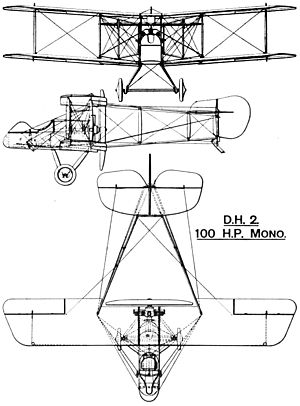Arthur Gerald Knight facts for kids
Quick facts for kids
Arthur Gerald Knight
|
|
|---|---|
| Nickname(s) | Gerry, Jerry |
| Born | 30 July 1895 Bedford, Bedfordshire, England |
| Died | 20 December 1916 (aged 21) Monchy-au-Bois, France |
| Buried |
Douchy-lès-Ayette British Cemetery, Pas de Calais, France
(50°10′31″N 2°43′17″E / 50.17528°N 2.72139°E) |
| Allegiance | United Kingdom |
| Service/ |
British Army |
| Rank | Captain |
| Unit | No. 4 Squadron RFC No. 24 Squadron RFC No. 29 Squadron RFC |
| Commands held | "B" Flight, No. 29 Squadron |
| Awards | Distinguished Service Order Military Cross |
Captain Arthur Gerald Knight (30 July 1895 – 20 December 1916) was a brave British pilot during World War I. He was known as a flying ace, which means he shot down at least five enemy aircraft. Knight achieved eight aerial victories during his time as a pilot.
He was involved in a famous event where two German pilots, Oswald Boelcke and Erwin Böhme, collided while attacking him, leading to Boelcke's death. Later, Knight himself was shot down by another famous German pilot, Manfred von Richthofen, also known as the Red Baron.
Contents
Early Life and Joining the War
Arthur Gerald Knight was born in England. His parents were Arthur Cecil Knight and Isabella Jael Knight. Before joining the war effort, he was a student. He studied Applied Science at Upper Canada College. In 1915, he decided to join the Royal Flying Corps, which was the air force of Britain at the time.
World War I Service
Becoming a Flying Ace
Knight became a pilot in the Royal Flying Corps. He was part of No. 24 Squadron RFC. His first victory happened on June 22, 1916. He used his Airco DH.2 plane to destroy a German reconnaissance aircraft. This type of plane was used for scouting and gathering information.
He continued to achieve more victories. Sometimes he would force enemy planes to land out of control. On September 14, he worked with another pilot, Stanley Cockerell, to shoot down a German Fokker fighter plane. The next day, he shot down another German fighter by himself.
A month later, he forced a Roland C.II plane down. On November 9, 1916, he shared a victory with Alfred Edwin McKay and Eric Pashley. Five days later, Knight was given the Military Cross award for his bravery.
Famous Air Battles
On October 28, Knight was flying when he was attacked by two famous German pilots, Boelcke and Böhme. At the same time, his friend McKay was being chased by Richthofen. During the intense dogfight, Böhme's plane accidentally hit Boelcke's plane. This collision caused Boelcke's plane to crash, and he died.
Knight later moved to No. 29 Squadron RFC. He became a flight commander, leading a group of planes. He was still flying the DH.2. On December 11, 1916, he received another important award, the Distinguished Service Order.
He achieved his eighth victory on December 16, shooting down an enemy fighter near Arras. He even kept fighting a second plane, even though his machine gun was broken. Four days later, he went on his last patrol before a break. He did not return from this mission. His patrol group came back, but their planes were damaged. Knight had been shot down by Manfred von Richthofen, the famous Red Baron.
Richthofen described the fight, saying he attacked Knight very closely. He saw that he hit Knight's plane, which then crashed to the ground.
Awards and Recognition
Arthur Gerald Knight received two important awards for his bravery and skill as a pilot.
- Military Cross
- This award was given to Second Lieutenant Arthur Gerald Knight for his "conspicuous skill and gallantry." This means he showed great skill and courage. He was recognized for fighting bravely against enemy planes and shooting down several. One time, he attacked an enemy plane that was bothering a scouting mission. He got very close and shot it down in flames.
- Distinguished Service Order
- This award was given to Second Lieutenant Arthur Gerald Knight, who had already received the Military Cross. He earned it for "conspicuous gallantry in action." This means he showed outstanding bravery during a battle. He led four planes against 18 enemy planes. He chose the right moment to attack, forcing five of the enemy planes down and scattering the rest. He showed great courage and good judgment as a leader of his patrols.


